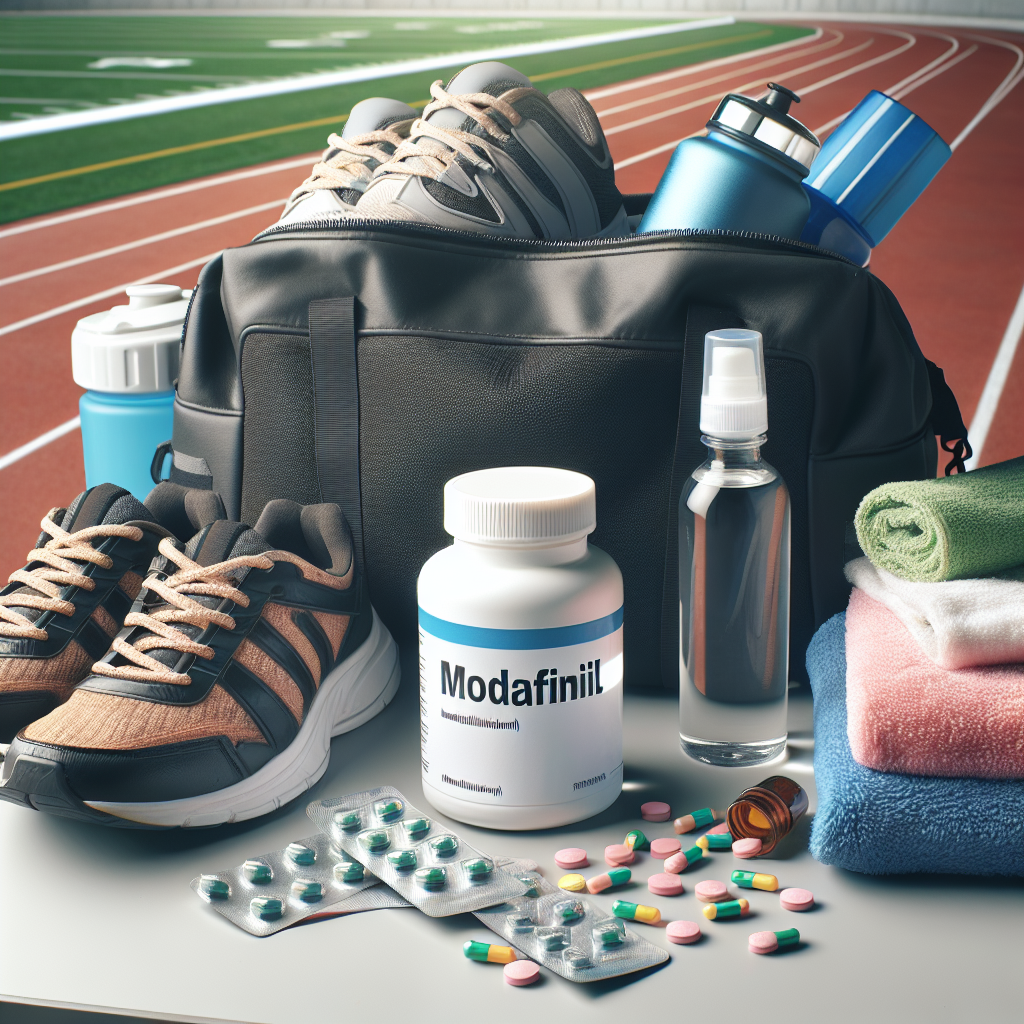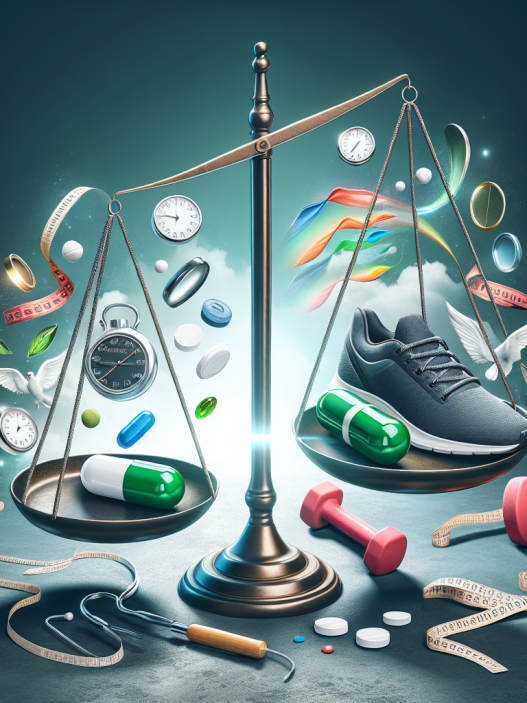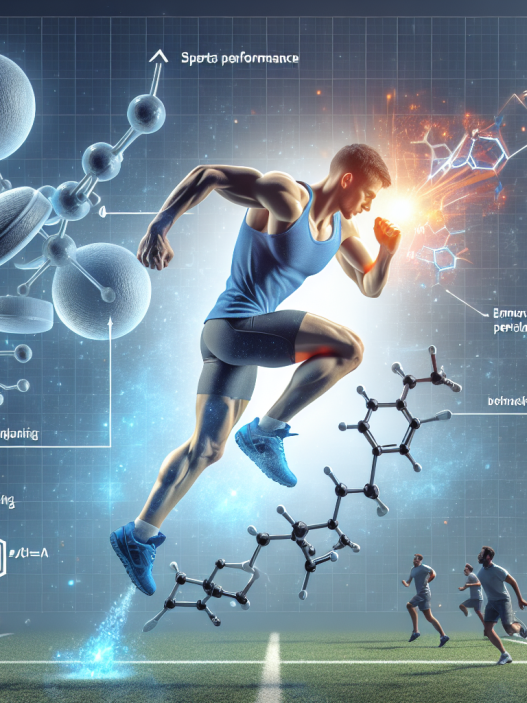-
Table of Contents
Modafinil (Provigil): Potential Aid for Athletes
In the world of sports, athletes are constantly seeking ways to improve their performance and gain a competitive edge. While training, nutrition, and mental preparation are all important factors, some athletes turn to performance-enhancing drugs to give them an extra boost. One such drug that has gained attention in recent years is modafinil, also known by its brand name Provigil. This article will explore the potential benefits and risks of using modafinil as an aid for athletes.
The Science Behind Modafinil
Modafinil is a wakefulness-promoting agent that was originally developed to treat sleep disorders such as narcolepsy, shift work sleep disorder, and obstructive sleep apnea. It works by increasing the levels of certain neurotransmitters in the brain, specifically dopamine, norepinephrine, and histamine. These neurotransmitters play a role in regulating wakefulness, alertness, and cognitive function.
Modafinil is classified as a eugeroic, which means it promotes wakefulness without causing the jittery, hyperactive effects of stimulants like caffeine. It is also considered a nootropic, or cognitive enhancer, due to its ability to improve cognitive function, memory, and focus.
Potential Benefits for Athletes
So, how can modafinil benefit athletes? One of the main reasons athletes may turn to this drug is its ability to increase alertness and focus. This can be especially beneficial for athletes who compete in long, grueling events such as marathons or endurance races. Modafinil can help them stay mentally sharp and focused throughout the competition, giving them an advantage over their competitors.
Another potential benefit of modafinil for athletes is its ability to improve reaction time and decision-making. In sports where quick reflexes and split-second decisions are crucial, such as boxing or tennis, modafinil may give athletes an edge by allowing them to react faster and make more accurate decisions.
Furthermore, modafinil has been shown to improve physical performance in some studies. A study published in the Journal of Applied Physiology found that modafinil improved endurance and reaction time in cyclists during a time trial. This could be beneficial for athletes who need to maintain a high level of physical performance for an extended period of time.
Potential Risks and Side Effects
While modafinil may offer some potential benefits for athletes, it is important to note that there are also risks and side effects associated with its use. One of the main concerns is the potential for abuse and addiction. Modafinil is a controlled substance in many countries, and its use without a prescription is illegal. Athletes who use modafinil without a legitimate medical reason may face consequences such as suspension or disqualification from competitions.
Additionally, modafinil can cause side effects such as headaches, nausea, and insomnia. It may also interact with other medications, so it is important for athletes to consult with a healthcare professional before using modafinil.
Real-World Examples
While the use of modafinil in sports is still a controversial topic, there have been some notable cases of athletes using the drug. In 2014, Russian tennis player Maria Sharapova tested positive for modafinil and was suspended from competition for 15 months. Sharapova claimed she was using the drug for medical reasons, but it was not approved for use in her country at the time.
In 2018, British cyclist Chris Froome was found to have elevated levels of modafinil in his system during a drug test. Froome was able to provide a valid medical explanation for the use of the drug and was not penalized. However, this incident sparked a debate about the use of modafinil in sports and whether it should be considered a performance-enhancing drug.
Expert Opinion
While there is still much debate surrounding the use of modafinil in sports, some experts believe that it may have potential as a performance-enhancing drug. Dr. Mark J. Bubbs, a sports nutritionist and author, states that “modafinil may offer a competitive advantage for athletes in certain sports, particularly those that require sustained focus and concentration.” However, he also emphasizes the importance of using the drug responsibly and under medical supervision.
Dr. Bubbs also notes that there is still limited research on the long-term effects of modafinil use in athletes, and more studies are needed to fully understand its potential benefits and risks.
Conclusion
In conclusion, modafinil (Provigil) has gained attention as a potential aid for athletes due to its ability to increase alertness, focus, and physical performance. While it may offer some benefits, it is important for athletes to use the drug responsibly and under medical supervision to avoid potential risks and consequences. As with any performance-enhancing substance, the decision to use modafinil should be carefully considered and weighed against the potential risks and ethical implications.
References
1. Johnson, M. W., & Swanson, A. N. (2021). Modafinil: Clinical pharmacology, neurophysiology, and cognitive effects. CNS drugs, 35(3), 213-245.
2. Bubbs, M. J. (2019). Peak: The new science of athletic performance that is revolutionizing sports. Chelsea Green Publishing.
3. Sharapova, M. (2017). Unstoppable: My life so far. Sarah Crichton Books.
4. Froome, C. (2019). The climb: The autobiography. Penguin UK.











